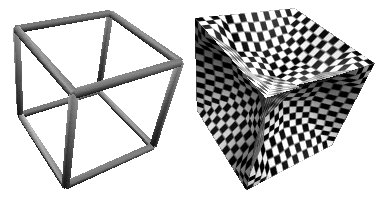June 2001A Rising/Floating Vacuum Balloon
The reason a helium balloon rises is that helium is lighter than "air" which is a concoction of oxygen, nitrogen, carbon-dioxide, and a variety of trace substances. The reason helium is lighter than air is that helium is less dense than air, meaning that there is less mass in a given volume of helium than there is in an equivalent volume of air. Now, nothing is less dense than a pure vacuum. A vacuum, by definition, contains no matter, and thus has zero mass (and likewise has zero density). If a balloon had a vacuum in it, it would rise with a stronger force than any other conceivable balloon, which means that the balloon could be smaller than a helium balloon to lift an equivalent payload (which makes it cheaper by saving on materials costs, plus allows it to fit into smaller spaces). The problem is that balloons are pressurized from the inside, and a vacuum has no pressure. If you suck all the air out of an ordinary rubber balloon, or a paper or plastic bag, what does it do? It collapses into a flat sheet with no volume. Since floating (rising) depends on displacement, volume is critical to the successful function of a balloon. My solution is to hold the volume of the balloon with some sort of skeleton. The surfaces of the balloon would be concave (pushed inward) rather than convex (like an ordinary balloon), but the balloon would still have a volume. One possible skeleton for a cubical balloon. Notice that the basic strategy is to place skeletal rods along the external edges of a polyhedron. Another possibility however (not pictured here) is to project rods through the volume from opposite corners. I am not sure which of these two methods would employ the least (and therefore lightest) total skeletal-rod material (I believe the internal method would work better for a cube, but this may not be the case for other shapes). I am also not absolutely certain which method would allow a greater volume to be maintained after the concave surfaces are pushed in (I believe the external method would work better for a cube, but again, this may not be the case for other shapes). The question in that case is simple. Can a balloon that has the extra added weight of a skeleton, and also suffering from concave surfaces instead of convex surfaces (which will reduce the volume), get any payoff in lifting capacity when "filled" with a vacuum over a helium filled balloon? This of course depends on what kinds of materials are available for the skeleton and the balloon's surface. Since the lifting force of a floating balloon is measured just like in any force, in newtons (or pounds if you prefer), all that is necessary for the calculation is to compare the difference in the lifting force for a given volume of vacuum compared to the same volume of helium with the difference in weight of the two kinds of balloons (the vacuum balloon has the extra skeleton, plus it will have to be larger in order to contain the same volume because of its concave surfaces). If the difference in lifting force is greater than the difference in balloon weight, then this idea will work, otherwise it won't. I haven't done any math, but I assume this isn't feasible at the present time. If it were, someone would have invented it already. In the future however, new materials may make this a feasible technology. On the other hand, helium is virtually inert (making is extremely safe) and is really cheap. While a vacuum is also inert and cheap, it may simply be easier to stick with good 'ol helium. |